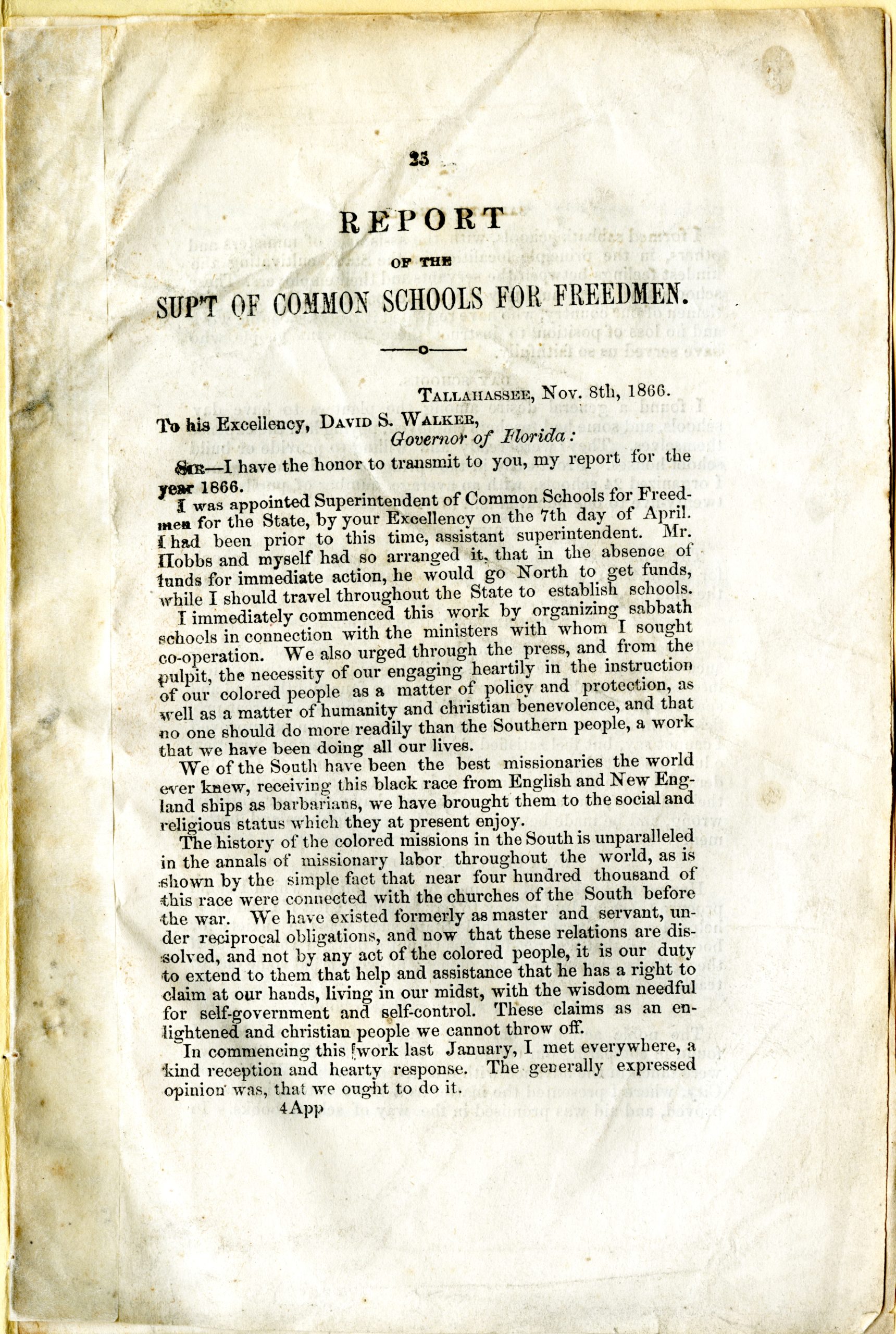In 1865, overtly discriminatory laws known as the “Black Codes” were encoded in the Constitution of the State of Florida. At that time, in post-Civil War Florida, white backlash tied to the fall of the Confederacy characterized the politics surrounding the state’s revenue and school expenditures.
In 1866, the Florida Legislature passed “separate but equal” laws establishing schools for Black students but stipulated that they would be paid for only with taxes levied on freedmen, or formerly enslaved individuals, plus a monthly tuition fee of 50 cents paid by each student. It also stipulated that the state’s education fund could only be used to support schools for white students. Thus, the Florida Legislature maintained racial segregation and ensured that Black schools would receive less funding.
Subsequently in 1868, Congress ratified the 14th Amendment to the Constitution of the United States, giving equal protection under the law and undermining the legality of Southern Black Codes. Florida, like other Southern states, responded by passing segregationist Jim Crow laws and continued to fight back against the federal government’s push for equality under the law. Though the 1868 Florida Constitution stated that “It is the paramount duty of the State to make ample provision for the education of all the children residing within its borders, without distinction or preference,” Florida continued to resist integrating its public schools. Rather, it further entrenched its two school systems, one for white students and one for Black students.
For more information about the Black Codes, visit other policy areas of The Florida Timeline:
